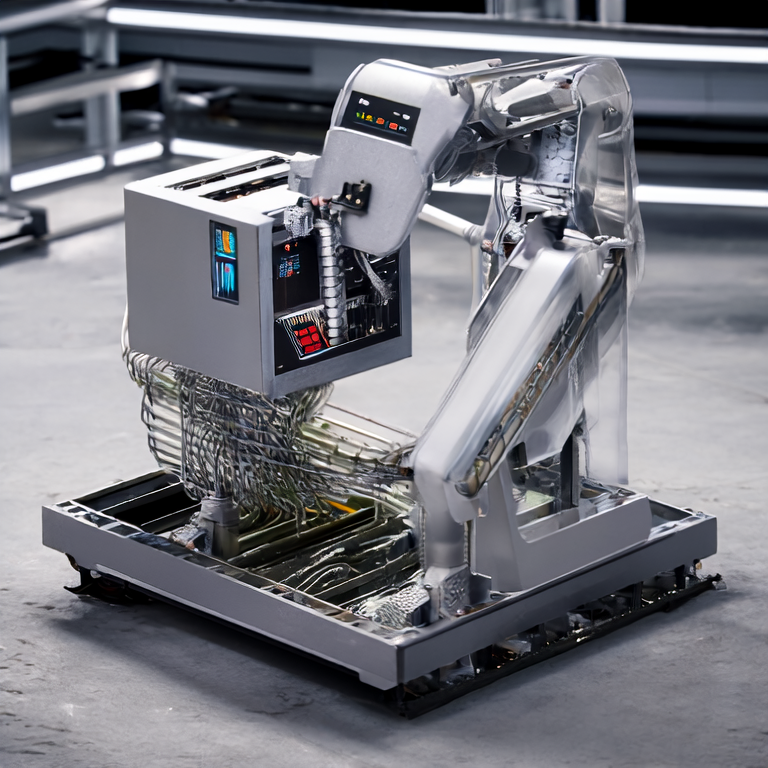In today\'s fast-paced manufacturing and logistics environment, integrating IoT sensors into Robotic Pallet Wrappers can be a game changer. Users often face challenges like inefficient wrapping processes, limited data collection, and machine downtime. As a Pallet Wrappers Supplier, we understand the pressing need to enhance operational efficiency. Real intentions might include reducing labor costs, minimizing material waste, and improving overall accuracy in packaging. Without integrating smart technology, companies risk being left behind in an increasingly competitive marketplace.
Required Preparation for Integration
Before diving into the integration process, having the right materials and tools is essential.
- Robotic Pallet Wrapper: Ensure a compatible model, such as those from the SMART WASP range.
- IoT Sensors: Acquire appropriate sensors for monitoring variables such as tension and weight.
- Data Management Software: Implement software capable of handling and analyzing sensor data, enhancing real-time decision-making.
- Network Connectivity: Reliable Wi-Fi or Ethernet connectivity is crucial for seamless data transfer.
- Technical Team: Assemble a skilled team familiar with both robotic machinery and IoT systems.
Step-by-Step Guidance to Integrate IoT Sensors into Robotic Pallet Wrappers
Follow these detailed steps to achieve successful integration:
- Assessment of Current Systems: Evaluate the existing pallet wrapping systems to identify specific inefficiencies. For example, a user, John from XYZ Logistics, noted that his company\'s wrapping process took an average of 45 seconds per pallet wrap, leading to production lags.

- Choose Suitable IoT Sensors: Based on the assessment, select IoT sensors that will improve areas such as tension monitoring. Research suggests that integrating such sensors can lead to a 30% reduction in material waste.
- Install Sensors on the Robotic Wrapper: Carefully attach sensors according to the manufacturer\'s guidelines. Take your time; improper installation can lead to data inaccuracies.
- Integrate Data Management Software: Connect the IoT sensors with data management software. This software will facilitate real-time monitoring and analytics, ultimately increasing operational speed by as much as 40%.
- Test the System: Conduct thorough testing to ensure smooth operation. A pilot run recommended by Maria from ABC Packaging reduced wrapping times from 45 seconds to an impressive 28 seconds, attributing this success to her data-driven approach.
- Analyze and Optimize: Use insights gathered from the data to optimize the wrapping process. Regularly review reports and adjust parameters as necessary to maximize efficiency.
Common Errors and Solutions
Even with thorough preparation, users may encounter some common issues:
- Misalignment of Sensors: Ensure proper calibration; any misalignment can lead to inaccurate data readings. Regular checks can help in maintaining accuracy.
- Data Overload: Too much data can overwhelm the management software. Ensuring clear objectives for data collection can prevent this.
- Network Connectivity Issues: A reliable connection is vital. Consider having backup options like mobile hotspots to mitigate risks.
Summary and Suggestions
Integrating IoT sensors into robotic pallet wrappers not only enhances efficiency but also significantly cuts costs. The case studies of John and Maria exemplify the benefits of employing smart technologies in factory settings. By closely following the prescribed steps, companies can streamline operations effectively. Always monitor the system post-integration to ensure long-term success.
FAQs
- What are the benefits of integrating IoT with robotic pallet wrappers?
Integration significantly improves operational efficiency, reduces waste, and allows for real-time monitoring.
- How can I choose the right IoT sensors for my pallet wrapper?
Assess your current challenges and select sensors that address specific issues, like tension or weight monitoring.
- Is training necessary for my team after integration?
Yes, training ensures that your team can effectively utilize the new technology, maximizing its benefits.
